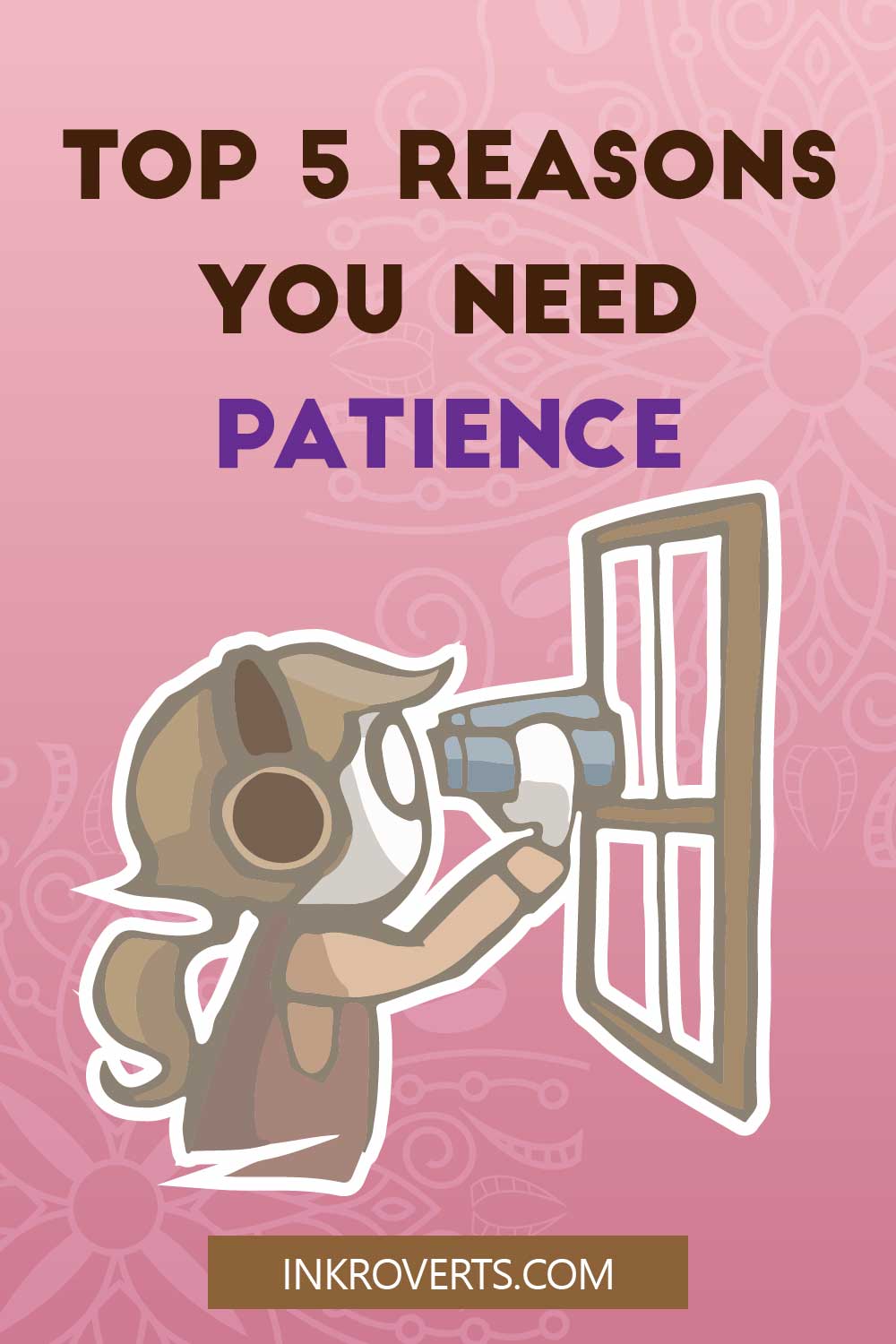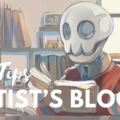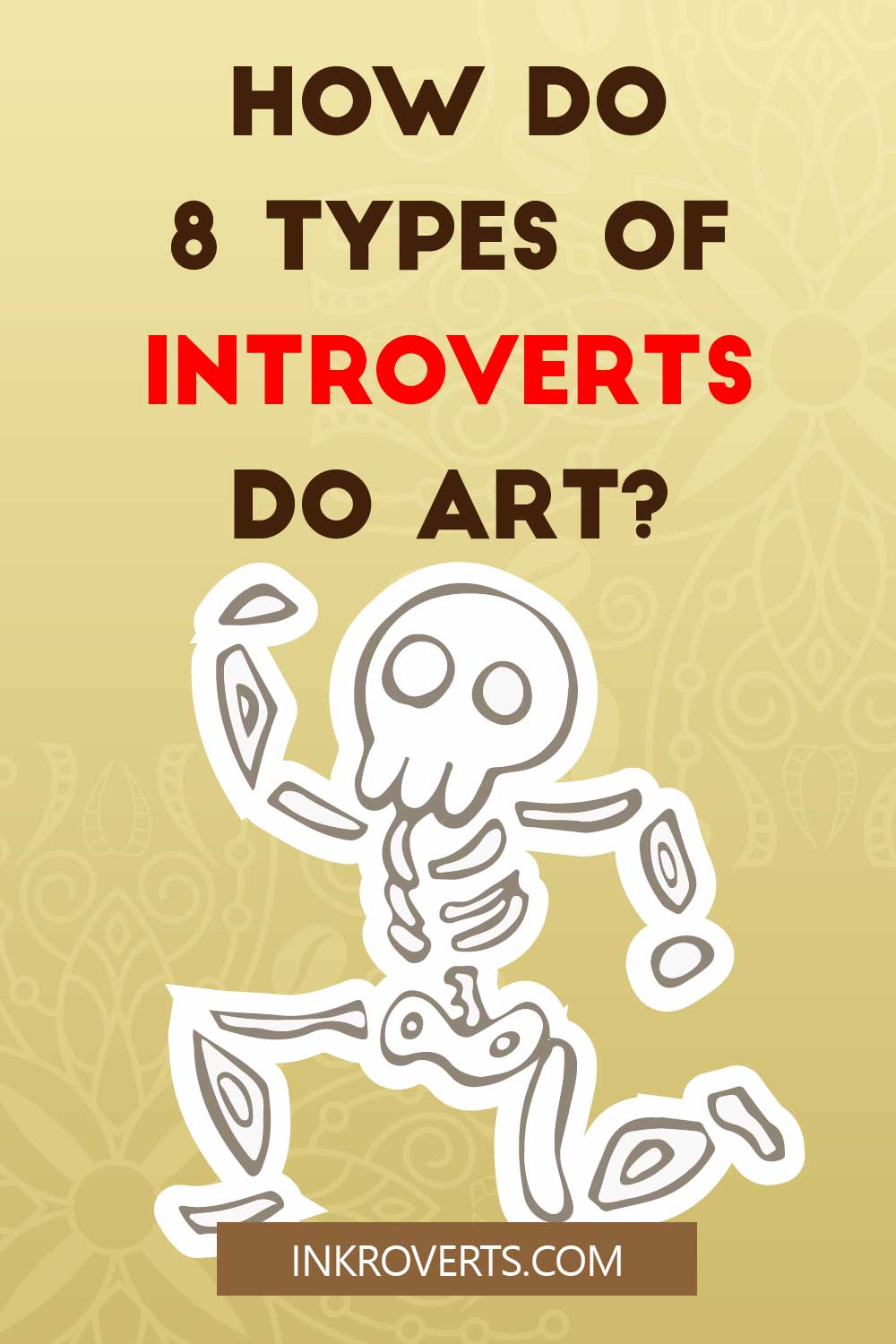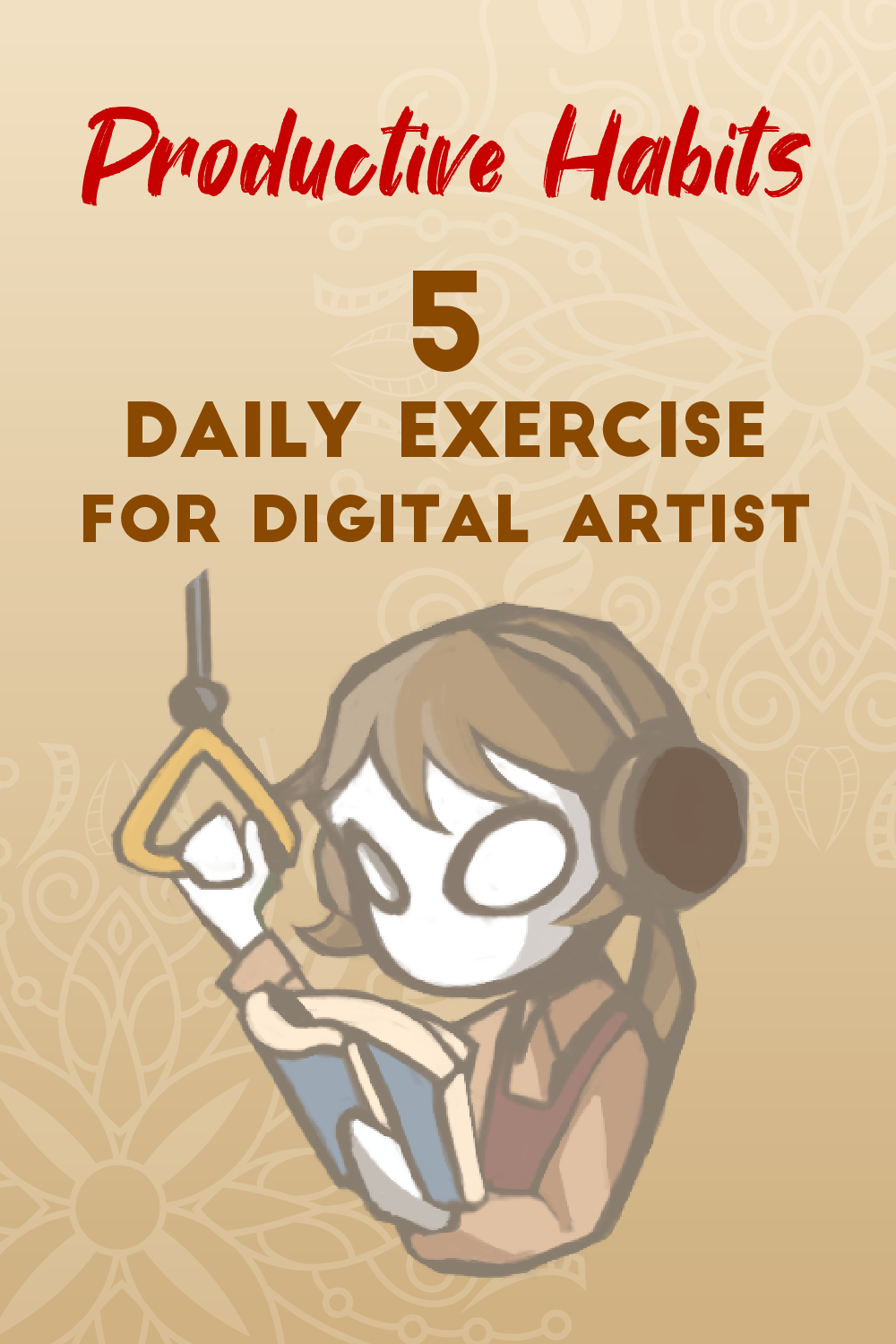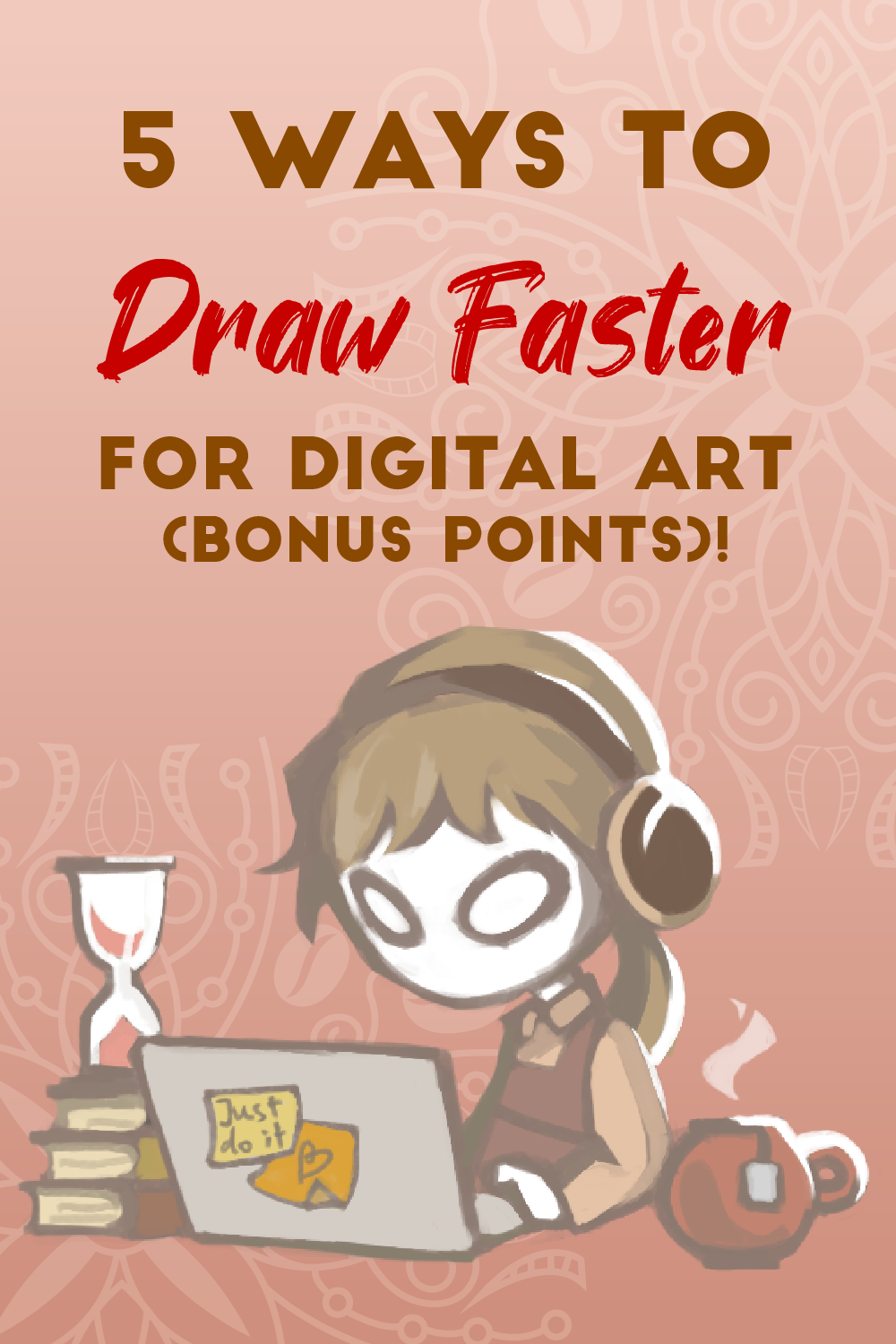
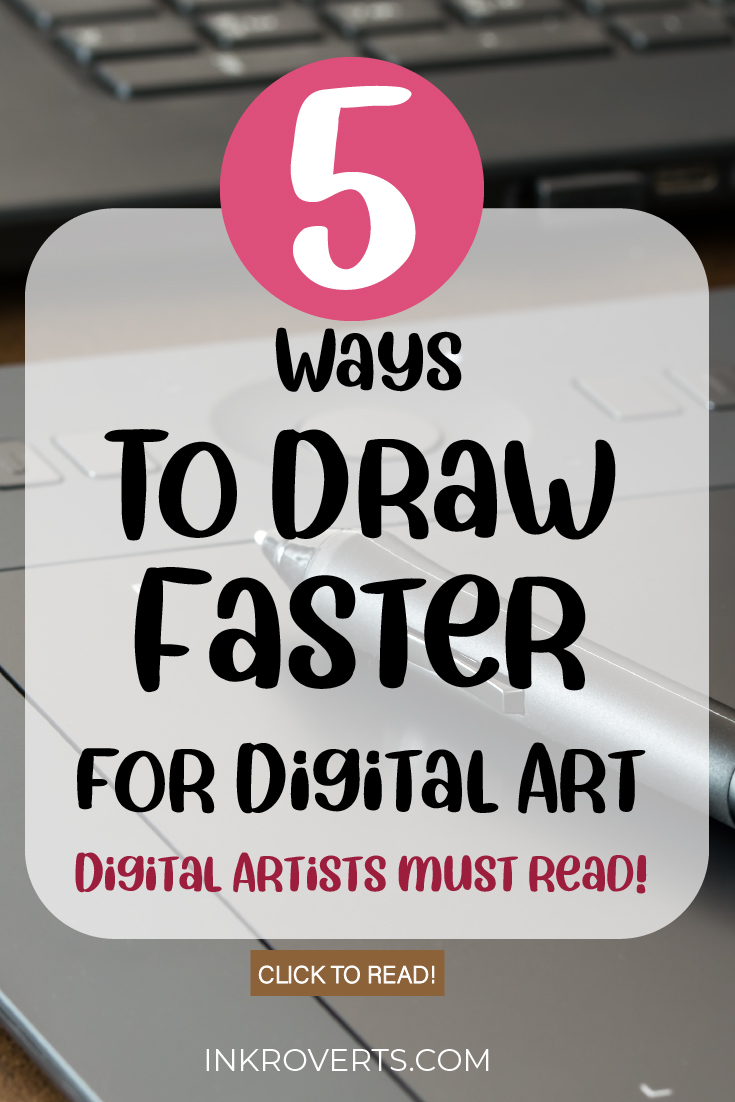
Digital painting is gaining popularity for many years. Since Craig Mullins and many other brilliant digital artists appeared, many of us are encouraged to pursue digital painting.
This medium of art is also known for its distinct features: backtracking by simply clicking ctrl+z, special effects, overlay layers, color adjustments, and many more.
Despite those benefits, digital art is still art. It requires time, patience, and effort, both in order to improve our skills and produce an artwork.
But there are still techniques- that can help us save time and avoid unnecessary troubles along the way.
So here are the 5 ways to draw faster for digital art!
- Draft on Paper
- Make Use of Negative Space
- Set a Deadline
- Use a Thick Brush
- Use Reference
- Bonus Point! (Read on to find out!)

Table of Contents
#1 Draft on Paper
As much as we love relying on digital software to draw, going back to simply pencil and paper will give you an extra boost of creativity.
This is because you are not in close proximity to all those tools and browsing engines. It is just you and a blank sheet.
Putting aside the sources of distractions, you can focus more energy on generating creative ideas.
Another benefit of drafting on paper is that- you are more likely to focus on how the draft looks in general. Instead of spending time correcting the line work, adding details, etc.
The same technique is used by writers. Many writers like to type their stories on the laptop. But during planning, they prefer taking out notebooks and write with pencils.

#2 Make Use of Negative Space
What is negative space? Just look at the image above!
The spaces that are not occupied by visual elements are negative. To put it simply, they are just empty spaces.
Many of us digital artists love to fill the canvas full of beautiful things. That is all well and good.
However, composition-wise, sometimes empty spaces are very useful. It helps bring focus on a piece of artwork.
In terms of saving time, well-applied negative space helps us avoid spending unnecessary efforts, like decorating a corner of the canvas that no one pays much attention to.
Just like the image above, the black space around makes us admire the beautiful Earth more!

#3 Set a Deadline
Deadline! The worse fear for many of us!
Don’t worry, though. This is about a self-implemented deadline. You know you’re not going to get fired or punished for not meeting it.
But a deadline is still a deadline. It serves as a firm reminder- of your ideal date of completing an artwork.
One of the worst time-killer for artists is procrastination. We put things off indefinitely. Because we don’t feel like drawing just yet. The just yet turned to hours, then days, then weeks…
If you set a series of deadlines (e.g. deadline for 20% complete, 30% complete… Or deadlines for artwork #1, artwork #2…), you set your mind thinking that you have to finish it before time’s up.
You will be surprised at how much you can accomplish, with a little less procrastination each day.

#4 Use a Thick Brush First
This point depends on the style of your art. Some digital artists prefer to do a clean line art first, some prefer cell-shading, some prefer a painterly-look…
The thick-brush technique can be applied in the beginning stage of painting.
Basically, it establishes the big shapes. When the big shapes look satisfying, 80% of your artwork will look just as good. The rest relies on the details.
Many digital artists love to dwell in the details immediately. Details for the line art, for the character’s eyes, for the hands… and so on.
As a result, when they zoom out to see the whole image, they have to make adjustments again. Because the zoomed-out look seems so different from the zoomed-in look.
So, to save the time of these post-detail adjustments, try to make a solid foundation with thick brushes first!

#5 Use Reference
Many artists, even professional digital artists, use reference.
Reference is both a great learning opportunity, and a useful tool to avoid making unnecessary mistakes.
Our knowledge is always limited. An artist can be good at drawing portraits, but not drawing cars. Another artist can be a master at drawing environment, but not in human anatomy.
Reference is there to guide artists, not for copying. So we shouldn’t feel embarrassed about using reference in the first place.

Bonus: Don’t be a Perfectionist!
A perfectionist mindset is very contradictory.
If an artwork has to be “perfect”, how do we know when the artwork is so? If the artwork is finished and “perfect”, does that mean it outmatches all the other art? If not, then why is it “perfect”?
Over-rendering an artwork not only wastes our valuable time, but also makes the artwork look worse!
I believe “perfection” doesn’t exist. But we can still get better than our past selves.
While we strive to make good digital art, and improve our skills, we also need to accept our limitations.
“It’s okay!” “Keep going!”
Most importantly, enjoy the process!
I have a feeling- that some of my readers who found this post because they got tired with how long an artwork takes to complete, or that they grew increasingly burnt-out.
Painting is a creative process- so it can be exhausting for the brain when you do it for a long period of time.
Therefore remember to rest your mind! And also remember the reason you paint in the first place. It’s important that you feel happy in the process. Because that’s the whole point of it!
Hope the above tips help your pursuit in digital art! Good luck!
